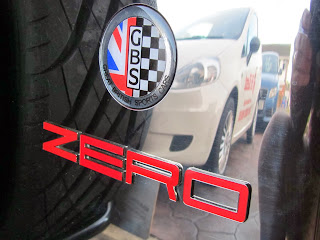Over the Christmas break I did a little work on the roof frame but forgot to blog - its not finished - and another pause before I go further.
The pivots either side are in place, spring side is locked in place and tensions the spring, the other end is free to rotate:
The roller does spin on its spring as required:
The theory being it can be moved into place while inside the car unfurling the roof as it goes:
All well and good - just still not decided on the windscreen mounting method... the old sheet I was using as template material was not working - far too stretchy and not really letting me work out the shape of fabric required.
Still needs some more thought.
Update - discarded this idea, it's just too complicated and not really worth it compared with a simple surrey top or a more traditional roof frame. For now I'm sticking with a surrey top fastened to the windscreen frame and over the roll bar.
Still needs some more thought.
Update - discarded this idea, it's just too complicated and not really worth it compared with a simple surrey top or a more traditional roof frame. For now I'm sticking with a surrey top fastened to the windscreen frame and over the roll bar.
























































